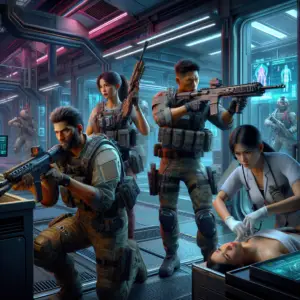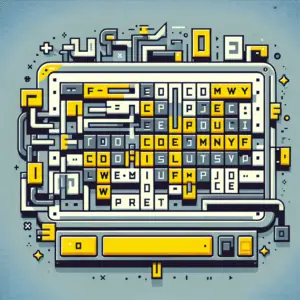The Frustrating Complexity of Respeccing in Singleplayer RPGs
The act of respeccing—or reallocating one’s skill and attribute points—in singleplayer RPGs remains a source of vexation for many gamers. Despite the advancements in game design, the process is often mired in unnecessary complexity, turning what should be a straightforward task into a daunting challenge. This frustration is compounded when, in some cases, the option to respec is not available at all, forcing players to either live with their choices or start anew. The intricate web of game mechanics can make even the simplest changes feel like navigating a labyrinth, leaving players yearning for a more user-friendly experience.
The Evolution of Game Design
Game design, particularly within the realm of RPGs, has a storied history, with certain mechanics and features becoming deeply ingrained over time. Initially, many MMORPGs were designed with a strong social focus, encouraging players to interact and form communities. This often meant incorporating gameplay elements that necessitated or facilitated player communication.
However, as the genre evolved, there was a noticeable shift towards more solo-friendly features, streamlining the experience to accommodate players who preferred to adventure alone. This transition saw the gradual phasing out of certain time-consuming mechanics that were once staples of the genre.
- Resting periods after combat for health and mana regeneration
- Applying buffs before each encounter
- Lengthy travel times to encourage interaction
These elements have been refined or removed to create a more fluid and accessible gaming experience, reflecting the changing preferences of the player base.
Theories on Respec Restrictions
One might wonder why the ability to respec in singleplayer RPGs is often laden with restrictions or made overly complicated. Historically, RPGs were known for their complexity and difficulty, which were seen as integral to the gaming experience. Games like Fallout and Baldur’s Gate presented intricate systems that rewarded players for their deep understanding and mastery.
Over time, there has been a noticeable shift towards making RPGs more accessible to a broader audience. This evolution has simplified many of the genre’s more complex systems, making them less intimidating to newcomers without sacrificing depth for those who seek it. The transition from punishingly difficult games to those that are more forgiving has changed the landscape of RPGs, yet the respec process often remains a relic of the past.
It’s possible that these restrictions are a holdover from an era where making a mistake in character development was part of the learning curve—a rite of passage that players had to endure. However, as the genre has modernized, the need for such punishing mechanics has diminished, leading many to question their continued existence.
Economic Considerations in Multiplayer vs. Singleplayer
In the context of multiplayer RPGs, respec costs can serve as a necessary economic sink to help balance the in-game economy. These costs help to remove currency from the game, combating inflation and maintaining the value of in-game items and resources. However, this economic model does not translate well to singleplayer RPGs, where there is no player-driven economy to consider.
| Multiplayer RPGs | Singleplayer RPGs |
|---|---|
| Virtual economy with player-driven markets | No player economy, closed system |
| Respec costs as currency sinks to combat inflation | No need for currency sinks, as inflation is not a concern |
| Repair bills, auction fees, and other gold sinks | Typically no persistent costs that affect gameplay |
| Encourages player interaction and trade | Focused on individual player experience |
The presence of respec costs in singleplayer games often feels like an arbitrary barrier, a holdover from multiplayer game design that doesn’t serve a purpose in a solitary gaming experience.
Case Studies: Remnant 2 and Cyberpunk 2077
In examining the respec systems of modern RPGs, Remnant 2 and Cyberpunk 2077 provide insightful case studies. Remnant 2 initially featured a consumable item called the Orb of Undoing, which allowed players to respec their trait points at a significant cost. This decision was met with criticism, as the high cost made respeccing prohibitive. In response to player feedback, the developers adjusted the system, making the Orb of Undoing a one-time purchase that could be used indefinitely.
Cyberpunk 2077 also underwent significant changes post-launch. With the 2.0 update, CD Projekt Red introduced the ability for players to respec their Attribute Points, but only once. This decision was puzzling to many, as it seemed to contradict the otherwise flexible nature of the game’s character customization options. The limitation on respecs appeared to be an arbitrary restriction that did not enhance the gameplay experience.
These examples highlight the ongoing struggle to balance player freedom with game design choices that can sometimes seem outdated or out of touch with current gaming trends.
The Respec Issue in Elden Ring
The respec system in Elden Ring presents its own unique challenges. While the game is known for its difficulty, which is a signature of the developer’s design philosophy, the respec mechanic is not as forgiving as some players would like. To respec, players must consume a Larval Tear, a limited resource, which can make experimenting with different builds feel like a high-stakes gamble.
Despite Elden Ring being a predominantly single-player experience, the respec system seems to carry over punitive elements from multiplayer games. This can lead to frustration for players who wish to explore the game’s vast array of build options without being penalized for curiosity or mistakes made early in the game.
While Elden Ring does provide a number of Larval Tears throughout the game, the scarcity of this item means that players must often wait until the latter stages of the game before they feel comfortable enough to invest in respecs. This can limit the exploration of the game’s deep and varied combat system to those who are willing to commit to a lengthy and potentially arduous journey.
Concluding Thoughts on Respec Costs in Singleplayer Games
In conclusion, the imposition of respec costs in singleplayer games without player economies seems to be an outdated practice that adds little to the gaming experience. These costs, which are a holdover from the days of multiplayer RPGs, serve no purpose other than to create an unnecessary hurdle for players. In a gaming world where player freedom and customization are highly valued, it’s time to reevaluate the need for such restrictions.
Singleplayer RPGs should focus on providing a rich and rewarding experience that encourages exploration and experimentation. Respec costs, especially when they serve no economic function, only hinder this goal. It’s time for game designers to let go of this archaic mechanic and embrace a more player-friendly approach to character development.
Players should be free to experiment with their builds and playstyles without the fear of incurring penalties or costs that detract from their enjoyment of the game. After all, the heart of RPG gaming is the ability to craft a personalized journey, and respec costs are an unnecessary barrier to this creative freedom.












